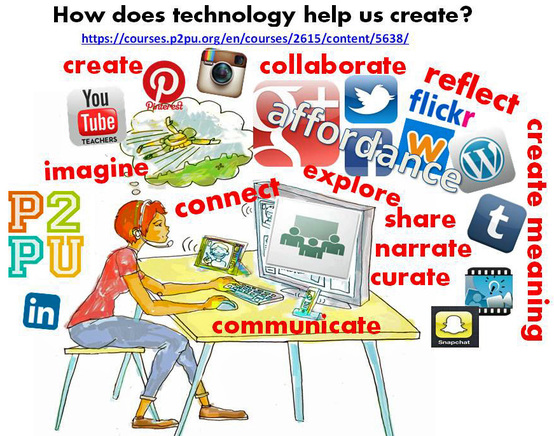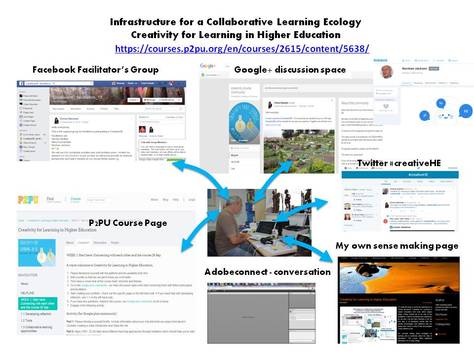.During the first webinar last night one of the participants asked what is the point of the technology? How can it help us to help our students be more creative? He asked it because he was a member of MMU staff and he would be attending the university's workshop on Thursday and I think he was perplexed by what seems like an apparent emphasis on the technology. Chrissi said it was all about connecting with other people that we would not normally be able to connect to and of course this is true. Living in southern England and not being a member of MMU I can only participate in this process because of the technological infrastructure that chrissi and the internet have made available.
But there is another point I'd like to make which connects to the post I made yesterday. It's about affordance - our relationships to and engagement with each other in this process through the affordances that the technology provides. Affordances that have yet to be revealed to us. I think that some or much of our creativity will be engaged and emerge through our relationships and interactions with this environment which is invites and encourages us to act in particular ways. I welcome other perspectives on this.
I get lots of pleasure from producing illustrations so here is one I have created to try to capture the themes of connecting and affordance.. Oh I almost forgot - technology helps you create things you could not do by other means - it extends our repertoire of ways of creating stuff and helps us to feel good about bringing something visual into existence.
But there is another point I'd like to make which connects to the post I made yesterday. It's about affordance - our relationships to and engagement with each other in this process through the affordances that the technology provides. Affordances that have yet to be revealed to us. I think that some or much of our creativity will be engaged and emerge through our relationships and interactions with this environment which is invites and encourages us to act in particular ways. I welcome other perspectives on this.
I get lots of pleasure from producing illustrations so here is one I have created to try to capture the themes of connecting and affordance.. Oh I almost forgot - technology helps you create things you could not do by other means - it extends our repertoire of ways of creating stuff and helps us to feel good about bringing something visual into existence.
Additional points grown through participation in the open learning course
I'm a Teaching Fellow & Librarian at the University of Huddersfield, plus do bits and pieces of training, etc., outside my "day job", which get pulled together on my website if anyone is interested! I enjoy trying new ideas out and playing with different approaches to developing the information literacy of students and staff.
People have relationships with technology that enabled them to curate and share resources that they find useful and when they are willing to share their personal resources, for example through te invitation that was posted on the community website the technology enables others to benefit and perhaps new relationships may form through this process.
I'm a Teaching Fellow & Librarian at the University of Huddersfield, plus do bits and pieces of training, etc., outside my "day job", which get pulled together on my website if anyone is interested! I enjoy trying new ideas out and playing with different approaches to developing the information literacy of students and staff.
People have relationships with technology that enabled them to curate and share resources that they find useful and when they are willing to share their personal resources, for example through te invitation that was posted on the community website the technology enables others to benefit and perhaps new relationships may form through this process.


 RSS Feed
RSS Feed